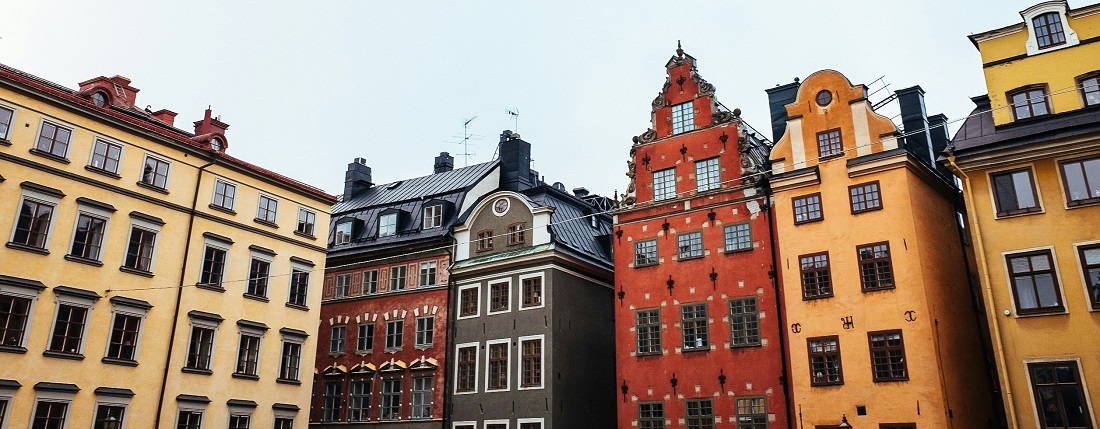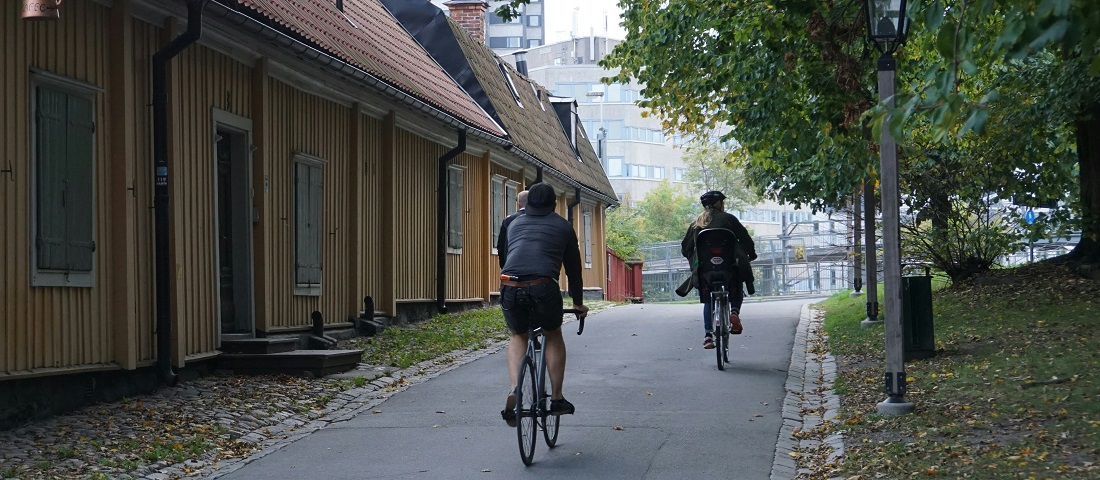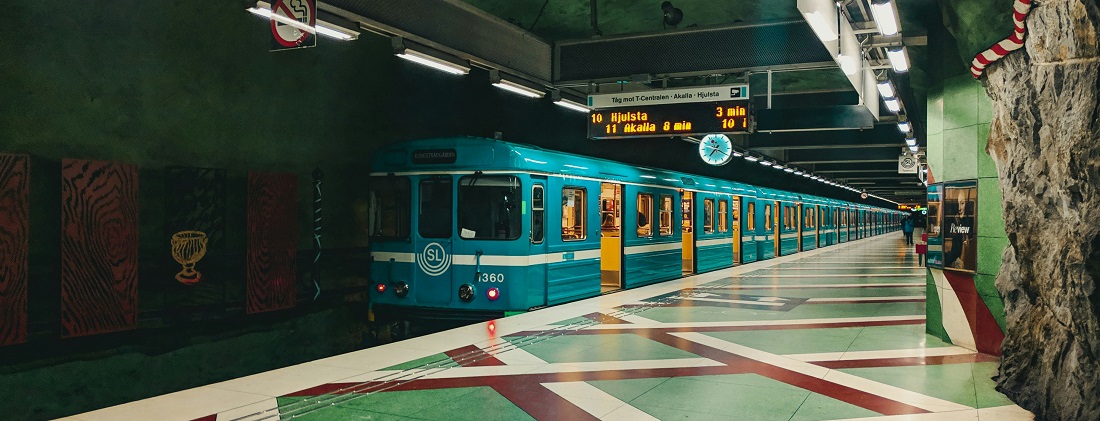Stockholm is a beautiful, green, and peaceful city. It sits on 14 islands and is home to a quarter of Sweden’s population. There’s a lot to love about Stockholm. While it may not be perfect, if you focus on the positives and avoid the downsides, you’ll find that the Swedish capital can be a great place to call home.
Here are some pros and cons of living in Stockholm.
Accommodation in Stockholm
It is likely that, regardless of where you’ve lived before, you will find the standard of housing in Stockholm quite high as far as infrastructure and build quality goes. Most housing in the inner city comprises average-sized apartment buildings, while the outer city limits and beyond will offer plenty of villas and attached homes.

+ PRO: Clean and updated
People in Sweden typically take good care of their homes. Whether you rent or buy, most places have modern amenities, and everything is usually well-maintained. Homeowners often remodel their spaces, so most properties are in great condition. In apartment buildings, associations ensure services like rubbish collection, laundry, and repairs are handled regularly and kept in order.
– CON: Expensive and limited options
Relative to other Western countries, Stockholm’s cost of accommodation, whether renting or buying, is undeniably exorbitant. Prices are much higher in the inner city, so looking at options, even just a couple of subway stops further, will make a difference.
The rental market is a real mess; even locals have difficulty finding lasting and affordable rentals in the city. It is not impossible, of course, but it does take some diligence and possibly some networking. In fact, young families will frequently buy an apartment in Stockholm because of the tricky rental situation.
Lifestyle in Stockholm
Many refer to Stockholm as the Capital of Scandinavia. The city has a great deal of culture, a mix of nightlife, and a wide variety of restaurants, yet the city retains a quaint and calm overall vibe.
+ PRO: Outdoor/active lifestyle
Stockholmers love the outdoors and fill the warmer months with barbecues, sporting events, visits to the countryside, and soaking up the limited sunshine. They may complain about the long winters, but it doesn’t mean they don’t know how to make the most of them.
During those colder months, the Swedish often go on long weekend skiing trips, hike in the snow, and go ice skating or sledging. Winters in Stockholm are not too extreme, but there is usually quite a bit of snow, which makes for great skiing, boarding, and other fun snow-based sports.
– CON: Long winters
Winters in Stockholm are long and quite dark. In December, daylight only lasts for about six hours. For the high latitude it sits at, the city has better weather than one would expect. There may be a longer time to wait for spring, but sunny, snowy days are frequent in Stockholm, and it’s important for expats to learn to make the most of these if cold and darkness bother them.
+ PRO: Green city
Stockholm is one-third water and one-third green space. This makes for an abundance of parks to picnic in during the summer and possibly sledge through in the winter. There are smaller islands to explore and countless waterfront restaurants, cafés, bars, and attractions to enjoy. The city is clean and not very crowded at all. It’s easy to enjoy nature right in the inner city, as well as find a quiet forest to hike through, not more than 15 minutes from the centre of town.
Safety in Stockholm
+ PRO: Low crime rates
Stockholm is a very safe place with low levels of petty crime and even lower levels of serious crime. It’s one of the safest capital cities in all of Europe.
– CON: Theft and fraud in some areas
Some fancier areas of Stockholm, such as Östermalm and nearby upscale suburbs, are targeted for burglary. Stockholm has very low rates of such crime compared to other international cities, as stated above, but it is still important to be aware of this. Also, rental fraud is not uncommon in Stockholm, so you should be aware of this when looking online for housing.
Working and doing business in Stockholm

+ PRO: Work/life balance
Swedes generally have around five weeks of vacation a year, plus a generous number of public national holidays. This, combined with a family-oriented culture, contributes to a strong sense of work/life balance, even in the capital city. Even the more demanding and fast-paced industries will have fewer working hours per week than companies in many other Western and Asian cities.
– CON: Slow summers and holidays
Since Swedes take so much time off in the summer and during winter holidays, processes such as job searches or applications, visa processing, business deals or projects, and more will be delayed. You should plan around this, especially if conducting a job search in Stockholm.
Local culture in Stockholm
Stockholm is a tolerant and worldly city and is welcoming to all kinds of people and cultures. The Scandinavian shyness is likely the biggest hurdle that an expat will have to deal with.
+ PRO: Non-hierarchical and equal society
Most of Stockholm’s – and Sweden’s – workplaces, organisations, political groups, and the like are decidedly non-hierarchical. It’s important to Swedes that everyone from the secretary to the CEO has a voice and is treated equally. Upper management typically doesn’t get many more benefits than anyone else in a company. This may feel unusual if you come from a country with a different culture, but it makes for a society where many are comfortable in their workplace and can approach anyone without much bureaucracy.
– CON: Reserved culture
Getting to know Swedes may be difficult in the beginning. Even those from outside Stockholm sometimes see city residents as less friendly. This often comes from the fact that Swedes are generally reserved and private, especially in public or with people they don’t know well. Understanding this, along with the fact that social circles can be tight, will help you enjoy your time in Stockholm more.
Making friends is possible, but it may take time. Remember, shyness is not the same as rudeness. Be patient and genuine with the Swedes you meet, and respect their personal space. If you follow these simple rules, you’ll likely find that locals warm up to you. Joining local social, business, or sports clubs can also help.
Learning Swedish is very helpful for making friends. Stockholmers appreciate expats who are friendly, open, and interested in them. Just try not to come off as too loud or opinionated.
Cost of living in Stockholm
+ PRO: Affordable cultural and leisure options
Culture is a highly valued part of Stockholm’s city budget, and locals are keen on putting together entertainment at a low cost – many museums and exhibits around town have little to no entry fees. It is relatively cheap to take the boats around the different islands of the city in the summer, as well as to rent bicycles. In the warmer months, parks often have free concerts and shows.
– CON: High cost of living
Generally, most things in Stockholm – from housing to clothing, petrol to public transport, alcohol to movie tickets – are quite expensive. You should prepare to adjust your lifestyle accordingly.
Education and schools in Stockholm
+ PRO: Great bilingual schools
High-quality bilingual schools and other types of international schools are relatively common in Stockholm and nearby suburbs, especially compared to the rest of the country.
– CON: Strict homeschooling laws
Homeschooling in Sweden is heavily regulated and mainly only allowed in rare and specific circumstances. This may be an issue for some expats.
+ PRO: Esteemed high schools and universities
The public high schools, colleges, and universities located in Stockholm are some of the best the country, and Scandinavia, have to offer. Stockholm has a high number of students and is a vibrant place to study.
Healthcare in Stockholm

PRO: Accessible health insurance
As an expat moving to Stockholm, you’ll likely have good health insurance, whether you’re a student or have a residence visa through work or a relationship. You’ll need to pay a small fee for visits and checkups, but these are usually inexpensive. It’s also easy to pick up prescriptions at any pharmacy, and they’re generally affordable.
– CON: Language barrier
If you’re in Stockholm and don’t speak Swedish yet, dealing with the healthcare system can be challenging. Most healthcare documents and forms are only available in Swedish, and the options you hear on the phone are also in Swedish. You’ll need some patience to navigate this system.













